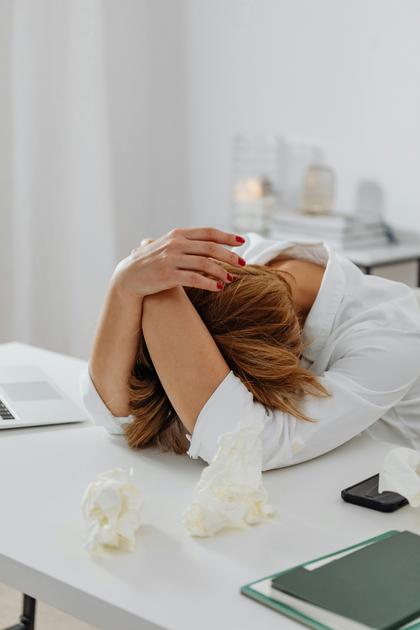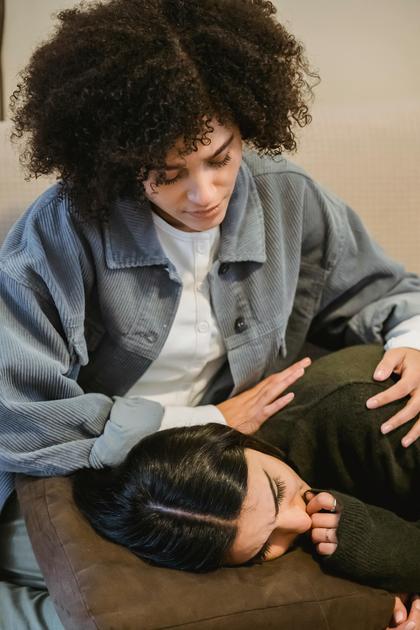Chronic anxiety is a significant issue that many women face daily, often feeling like they’re carrying the weight of the world. It’s essential to understand how lifestyle changes can profoundly impact your mental health and well-being. Imagine waking up feeling lighter and more at ease with your thoughts! In this article, we’ll explore various strategies that can help you manage anxiety, embrace a healthier lifestyle, and connect with other women who share similar experiences.
Understanding Chronic Anxiety in Women’s Lives
Chronic anxiety is like a silent weight that many women carry, often without realizing just how heavy it can become. For women over 30, the daily juggling acts—whether it’s balancing careers, family responsibilities, or personal aspirations—can heighten feelings of worry and unease. This state isn’t merely stress; it’s a pervasive sense of dread that lingers in the background, sometimes bubbling to the surface in overwhelming ways.
Scientific studies suggest that women are more likely to experience anxiety disorders than men, which can lead to a feeling of isolation. Many women struggle silently, believing they must carry this burden on their own. It’s essential to recognize these feelings as valid, and understanding them is the first step toward healing.
The Connection Between Anxiety and Lifestyle Choices
Your lifestyle choices play a significant role in managing anxiety. Factors such as diet, physical activity, sleep patterns, and social engagement can either mitigate or exacerbate feelings of anxiety.
When discussing lifestyle changes, it’s important to explore the patterns that may contribute to chronic anxiety. Do you often find yourself eating convenience foods that lack nutrients? Are you skipping meals due to a busy schedule? These choices can lead to energy crashes, irritability, and increased anxiety.
Moreover, physical activity has powerful effects on mental health. A sedentary lifestyle can result in a cycle of anxiety and fatigue, making it crucial to find ways to incorporate movement into your everyday routine.
Healthy Eating: Fueling Your Body and Mind
Nutrition profoundly influences mental health and anxiety levels. Eating a balanced diet filled with whole foods can help stabilize your mood. Focus on:
- Fruits and Vegetables: Aim for a colorful plate! These foods are packed with vitamins and minerals that support brain health.
- Whole Grains: Choose oats, quinoa, and brown rice over processed grains to keep your energy stable.
- Lean Proteins: Foods like chicken, fish, beans, and lentils can keep you full and promote the release of neurotransmitters that improve mood.
- Healthy Fats: Incorporate sources of omega-3 fatty acids, such as fatty fish and flaxseeds, to support brain function.
Making small changes in your diet can lead to significant improvements in anxiety levels over time.
The Power of Exercise in Reducing Anxiety
Exercise isn’t just about physical health; it’s also a powerful tool for mental wellness. Engaging in regular physical activity can help reduce anxiety symptoms and improve overall mood. It releases endorphins, often referred to as “feel-good” hormones, which can act as natural painkillers and mood elevators.
Finding an exercise routine you enjoy can make a world of difference. Whether it’s yoga, dancing, walking in nature, or joining a local sports team, finding joy in movement is key. Start slow and gradually increase your activity level. Even short bursts of movement can provide immediate relief from anxiety.
Mindfulness and Meditation Techniques to Explore
Mindfulness and meditation practices allow you to start observing your thoughts without judgment. Mindfulness helps you to live in the moment, reducing the tendency to ruminate on past worries or future fears.
Begin with simple techniques:
- Deep Breathing: Inhale deeply through your nose, hold for a few moments, and exhale slowly. Repeat this several times to calm your mind.
- Guided Meditation: Use apps or websites that provide guided meditations tailored for anxiety.
- Body Scan: Lie down comfortably and mentally scan your body from head to toe, noticing areas of tension and consciously relaxing them.
Incorporating even a few minutes of mindfulness each day can create a soothing routine that can help manage feelings of anxiety.
Building a Supportive Community for Women
Connecting with others who understand your struggles is vital. Building a supportive community can bring relief. Consider joining local or online groups where women share their experiences with anxiety.
A supportive friend or group can offer empathy, advice, and encouragement. Initiating conversations about mental health might feel daunting, but you’ll likely find that many women face similar challenges.
Don’t hesitate to reach out to loved ones or seek professional support when needed. You’re not alone in this journey.
The Role of Sleep in Anxiety Management
Quality sleep is fundamental for emotional regulation and mental health. Many women find that anxiety disrupts their sleep patterns, creating a vicious cycle where anxiety leads to sleeplessness, which in turn exacerbates anxiety.
Here are some tips for improving sleep quality:
- Create a Sleep Routine: Try to go to bed and wake up at the same time every day, even on weekends.
- Limit Screen Time: Reduce exposure to screens an hour before bedtime to improve sleep quality.
- Design a Relaxing Environment: Ensure your bedroom is a calming space—keep it dark, quiet, and cool.
- Avoid Heavy Meals Before Bed: Eating heavy foods can cause discomfort and disrupt sleep.
Prioritizing good sleep hygiene can have significant positive effects on reducing anxiety.
Creating a Balanced Routine: A Path to Calm
Implementing a balanced routine can help in managing anxiety levels. Structure your day to include a mix of productivity and self-care activities. Set aside time for relaxation, socializing, exercise, and personal hobbies. Schedule your commitments but also block out downtime to recharge.
Reflect on your priorities; what brings you joy? Make sure those activities are integrated into your daily routine. Taking time for yourself isn’t selfish; it’s a vital part of maintaining your mental health.
Simple Breathing Exercises You Can Do Anywhere
Breathing exercises are a quick, effective way to reduce anxiety on the spot. You can practice these exercises anywhere—at your desk, in a meeting, or while waiting in line.
Here are a few to try:
- 4-7-8 Breathing: Inhale for four counts, hold for seven, and exhale for eight. Repeat several times.
- Box Breathing: Inhale for four counts, hold for four, exhale for four, and hold for four. Repeat until you feel calm.
- Alternate Nostril Breathing: Close one nostril while inhaling and then switch nostrils while exhaling. This can promote a calming effect.
These techniques can help you regain control in anxious moments.
Embracing Change: Steps to a Brighter Tomorrow
Embracing change is a vital part of overcoming chronic anxiety. It starts with recognizing and accepting your current state. Each woman’s journey is unique, and what works for one may not work for another. Be gentle with yourself as you explore these lifestyle changes.
Take small, actionable steps rather than overwhelming yourself with the need for drastic changes. Track your progress and celebrate even the tiniest victories. Remember, it’s okay to seek help and guidance along the way.
Allow yourself to envision a life where anxiety does not rule your days. Others have walked this path, lifted their burdens, and found relief. With consistent efforts, you too can aspire to brighter tomorrows.
Your journey toward healing may just begin with a simple step. When you’re ready, discover that path through the caring community of women who have transformed their lives.






